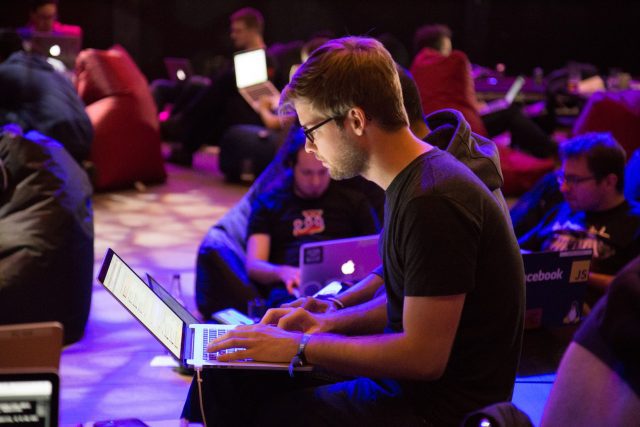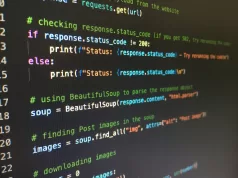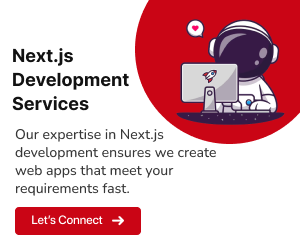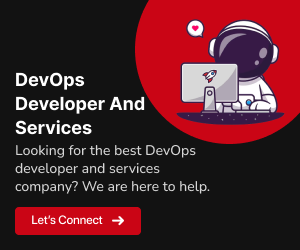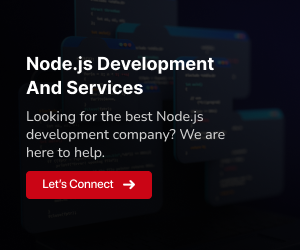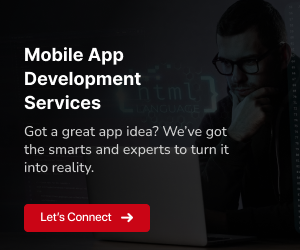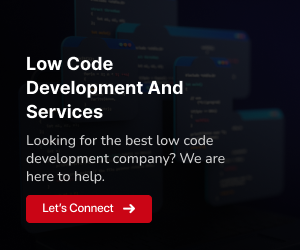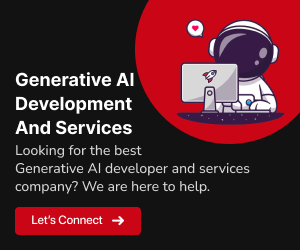Navigate challenges encountered by Flutter developers in the USA. Learn strategies to overcome obstacles and succeed in your app development journey.
Navigating the Landscape: Overcoming Challenges Faced by Flutter Developers in the USA
In the ever-evolving realm of mobile application development, Flutter has emerged as a powerful and innovative framework that has garnered significant attention. Its capability to craft stunning and functional cross-platform apps has captured the imagination of developers worldwide, including those in the United States. However, while Flutter offers a plethora of advantages, the journey for developers is not without its hurdles.
In this blog, we delve into the challenges that Flutter developers face on American soil and explore strategic approaches to overcome them. From navigating through platform-specific nuances to ensuring optimal performance, the road to Flutter excellence in the USA is paved with valuable insights and solutions. Join us as we navigate through these challenges, offering guidance to help Flutter developers thrive in this dynamic landscape.
To gain a deeper understanding of legal regulations and rules, we invite you to explore our comprehensive blog: Charting the Legal Course: Navigating Regulations for Flutter App Developers in the USA
Navigating the Flutter Frontier: Unveiling Hurdles and Triumphs for Developers in the USA
The journey of Flutter developers in the United States is marked by a series of challenges, each demanding unique solutions. As the demand for feature-rich, high-performance mobile apps continues to rise, developers need to address these hurdles head-on to ensure their creations meet user expectations and industry standards.
Platform-Specific Adaptations:
Challenge:
Ensuring uniformity and consistency in app interfaces and behaviors across iOS and Android platforms, given their evolving design guidelines.Solution:
In the realm of Flutter development, it’s essential to craft platform-specific widgets that align with Flutter’s core codebase. This approach ensures a uniform user experience across different platforms, as these widgets mimic the native elements of iOS and Android. To enhance functionality, developers can employ platform channels, enabling the seamless integration of native code. This strategic utilization of platform channels preserves the app’s integrity while harnessing the power of device-specific capabilities, ultimately resulting in a cohesive and responsive application across various platforms.Performance Optimization:
Challenge:
Ensuring optimal performance across a wide range of devices and scenarios due to Flutter’s flexibility.Solution:
Employing effective profiling strategies, developers can pinpoint areas of code that might lead to performance bottlenecks. Through optimizations, including asynchronous programming and minimizing widget rebuilds, the app’s responsiveness is enhanced, ensuring a seamless and engaging user experience. By adhering to these practices, Flutter developers can create high-quality applications that excel in performance and user satisfaction.Native Module Integrations:
Challenge:
Integrating native modules into a Flutter codebase, especially when incorporating device-specific functionalities, can be intricate.Solution:
Leveraging platform channels or readily available packages, Flutter developers can seamlessly integrate native functionalities into their apps. This involves a profound grasp of both Flutter and native platform development, enabling the harmonious coexistence of the two. By skillfully utilizing these channels and packages, developers bridge the gap between Flutter’s versatility and the specialized capabilities of the native platform, ultimately crafting apps that offer the best of both worlds. This synergy results in enriched user experiences and expanded app capabilities, showcasing the developer’s expertise in maximizing Flutter’s potential.State Management:
Challenge:
Selecting an appropriate state management solution to ensure effective data handling and responsiveness.Solution:
When considering state management strategies, such as Provider, BLoC, and MobX, Flutter developers engage in a thoughtful evaluation process. This involves analyzing the intricacies and demands of the project at hand. By assessing factors like project complexity and desired functionalities, developers determine which state management approach aligns most effectively. The aim is to strike a harmonious balance between simplicity, scalability, and long-term maintainability. Each strategy offers unique advantages, whether it’s the Provider’s ease of use, BLoC’s reactive nature, or MobX’s simplicity. The chosen approach hinges on the project’s intricacies, ensuring that the selected state management solution resonates with the app’s current needs while remaining adaptable to future enhancements.Keeping Abreast of Updates:
Challenge:
Adapting to frequent updates in the Flutter framework while maintaining app stability and compatibility.Solution:
Devoting dedicated time to consistent updates is a cornerstone of successful Flutter app development. This entails maintaining a codebase that is not only modular and well-organized but also aligned with the latest industry standards. Staying closely attuned to official release notes from the Flutter team is crucial, as it enables developers to incorporate new features seamlessly. Striking a balance between adopting new capabilities and ensuring backward compatibility ensures that users benefit from the latest enhancements without disrupting their experience. This strategic approach underscores the commitment to delivering cutting-edge functionality while maintaining a stable and reliable app environment.Limited Third-Party Libraries:
Challenge:
Navigating a growing but still limited ecosystem of third-party libraries and plugins.Solution:
Fostering innovation in the Flutter ecosystem involves both developing custom solutions and contributing to open-source projects. By creating tailored functionalities, developers address specific app requirements while enhancing their own expertise. Simultaneously, contributing to the open-source community amplifies the collective knowledge and capabilities of the Flutter platform. This collaborative spirit not only benefits individual projects but also enriches the entire Flutter library ecosystem. Encouraging growth in this way ensures that developers have access to a diverse array of pre-built solutions, ultimately streamlining development processes and accelerating app creation.Learning Curve:
Challenge:
Overcoming the learning curve associated with mastering Flutter’s concepts and development paradigms.Solution:
To become a skilled Flutter developer, dedicating time to thorough learning resources is key. Immerse yourself in the official documentation and explore a variety of online tutorials to build a solid foundation. Actively engaging with the vibrant Flutter community offers invaluable support and insights, allowing you to address challenges effectively. However, true mastery is achieved through hands-on coding. Apply your knowledge to real-world projects, experiment with different features, and embrace a growth mindset. With consistent effort and a commitment to continuous learning, you’ll gradually cultivate the expertise needed to excel in the dynamic world of Flutter app development.UI/UX Consistency:
Challenge:
Ensuring consistent and visually appealing user interfaces across diverse devices and screen sizes.Solution:
Crafting responsive layouts is a fundamental skill for Flutter developers. Use adaptive UI components to create designs that seamlessly adjust to various screen sizes and orientations. To guarantee a user experience that remains consistent and engaging across devices, conduct rigorous testing on a range of form factors. By dedicating time to ensuring responsiveness and adaptability, you’ll create apps that captivate users regardless of the device they’re using.Integration with Existing Codebases:
Challenge:
Successfully integrating Flutter into existing codebases or migrating from other frameworks without disrupting app functionality.Solution:
When migrating apps to Flutter, meticulous planning is crucial. Begin by evaluating the compatibility of existing code and frameworks. Refactor gradually, focusing on preserving core features and functionalities. A well-executed migration process ensures a seamless transition while maintaining the integrity of the app’s user experience and functionality.Debugging and Testing:
Challenge:
Debugging Flutter apps effectively, particularly given the framework’s reactive nature and complex UI hierarchy.Solution:
Leverage Flutter’s integrated debugging tools to pinpoint and resolve issues efficiently. Develop extensive test suites to cover various scenarios, and conduct real-world testing to identify UI-related problems and enhance overall app performance.Cross-Platform Compatibility:
Challenge:
Ensuring consistent behavior and appearance between iOS and Android platforms.Solution:
Thoroughly test the application on both platforms to ensure its functionality and performance. Use conditional checks to handle platform-specific behaviors and maintain a cohesive design language for a unified user experience.Client Communication and Expectations:
Challenge:
Bridging the gap between technical intricacies and client understanding, ensuring accurate communication, and managing expectations.Solution:
Ensuring effective communication between developers and clients is crucial. Flutter developers maintain open channels of communication, using non-technical language to explain complex concepts. They set realistic project timelines, establish transparent feedback loops, and keep clients updated on progress. This approach fosters a clear understanding of project status and allows for timely adjustments, ultimately aligning expectations and ensuring client satisfaction.Scope Creep and Project Management:
Challenge:
Managing to change project scopes and preventing scope creep that can lead to extended timelines and increased costs.Solution:
At the outset, Flutter developers define a clear project scope and meticulously document all requirements. They establish a structured change management process to handle scope modifications. New requests are regularly reviewed and prioritized, with careful documentation of any scope changes. This approach ensures that project goals remain aligned and deviations are managed efficiently, contributing to successful project outcomes and client satisfaction.Budget Constraints:
Challenge:
Balancing app quality with budget limitations set by clients.Solution:
Working in close collaboration with clients, Flutter developers prioritize understanding their objectives and preferences. They strategically allocate resources, seeking cost-effective solutions that align with the budget. Additionally, developers offer alternative approaches when necessary, ensuring that proposed solutions deliver optimal value while staying within budget constraints. This approach fosters a productive partnership, where both parties work towards achieving the best possible outcomes.Intellectual Property Protection:
Challenge:
Safeguarding intellectual property rights and ensuring compliance with legal frameworks.Solution:
Adhering to legal and ethical standards, Flutter developers ensure the implementation of appropriate licensing and copyright practices. They draft comprehensive legal agreements that clearly define ownership and usage rights, fostering a transparent relationship between developers and clients. Additionally, developers prioritize compliance with data protection laws, guaranteeing the secure handling of user data and maintaining the privacy and security of app users. This commitment to legal and ethical practices ensures a trustworthy and compliant development process.Client Education:
Challenge:
Educating clients about app development complexities and technical challenges.Solution:
Facilitating effective communication, Flutter developers excel in offering detailed explanations of intricate development processes. By presenting realistic expectations and employing visual aids to simplify complex concepts, they ensure clients have a clear understanding of the project’s progression. Through educational interactions, developers establish a collaborative partnership, fostering a shared sense of purpose and enhancing client satisfaction. This emphasis on transparent and educational communication leads to informed decision-making and successful project outcomes.Monetization Strategies:
Challenge:
Determining the most suitable monetization model for the app’s value proposition.Solution:
Thorough market research guides Flutter developers in comprehending user preferences and staying attuned to industry trends. By aligning monetization strategies with the app’s target audience, value proposition, and long-term objectives, developers ensure that the chosen revenue model resonates with users while supporting sustainable growth. This strategic approach to monetization contributes to the app’s overall success and its ability to generate revenue while providing value to its users.
By understanding and proactively addressing these challenges, Flutter developers in the USA can navigate the intricacies of app development while delivering innovative, high-quality solutions that cater to user needs and industry demands. Overcoming these obstacles requires a combination of technical expertise, effective communication, and strategic decision-making, ultimately leading to successful app projects.
Empowering Excellence: Navigating Challenges for Triumph in Flutter Development
The journey of Flutter developers in the USA is a testament to their resilience and adaptability. Overcoming a myriad of challenges, from platform-specific adaptations to budget constraints, these developers are crafting remarkable apps that stand out in the competitive digital landscape. By addressing each hurdle with creativity and strategic thinking, they ensure that their creations not only meet user expectations but also set new standards for excellence.




